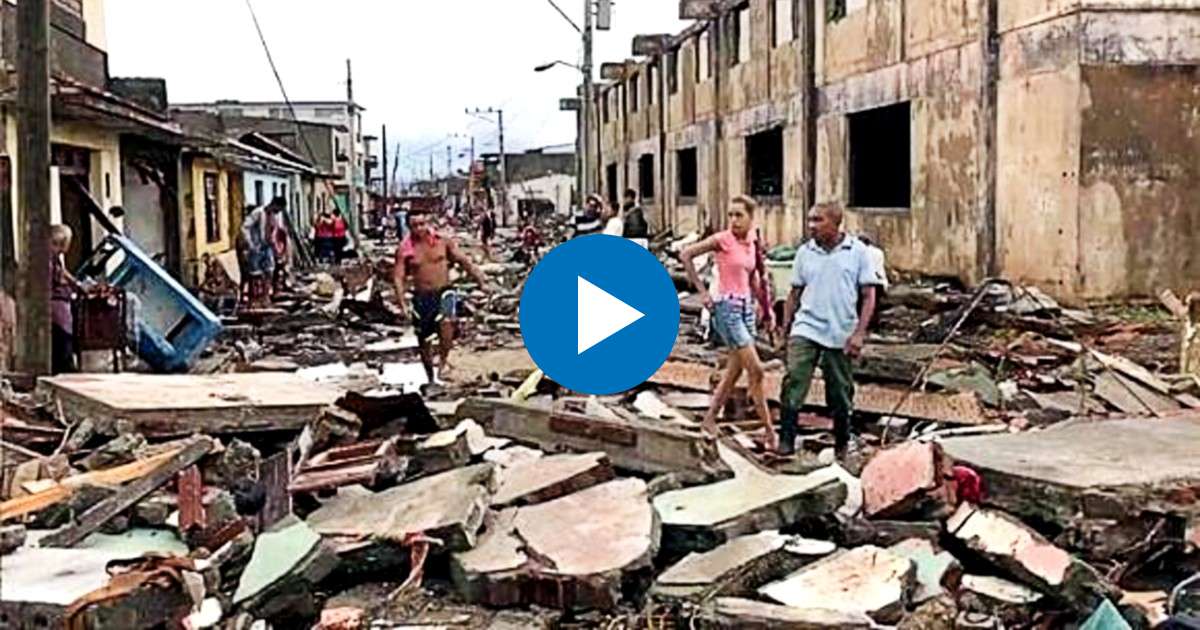
The Civil Defense reminded the population of the high intensity hurricanes that have hit Cuba in the month of October throughout recent history, thereby warning of the potential danger that looms over Cubans during the hurricane season.
“Cyclonic Season. Pay attention! Hurricanes of great intensity that have affected Cuba in the month of October, whose experiences we cannot forget: Flora 1963, Lili 1996; Lili 2002; Sandy 2012, and Matthew 2014. These last two category 4, with a great impact in the eastern region,” the Civil Defense warned in a tweet.
This cyclone season is forecast to be especially intense. According to experts from the National Oceanic and Atmospheric Administration (NOAA), 65 percent chance of an above-average hurricane season.
The extreme activity announced by scientific measurements allows them to announce that this season could see the formation of 15 to 21 named storms, of which between 7 and 10 would be hurricanes. "Atmospheric and oceanic conditions remain conducive to an above-average hurricane season," the institution said in a statement.
"A combination of competing oceanic and atmospheric conditions generally favors above-average activity during the remainder of the Atlantic hurricane season, including the possible return of La Niña in the coming months," said Matthew Rosencrans, senior seasonal hurricane forecaster. , in a virtual seminar at the NOAA Climate Prediction Center.
Already halfway through the hurricane season, which runs from June 1 to November 30, NOAA warned that August and October are the most dangerous months. An average season has 14 named storms, seven hurricanes and of those, three major ones. This year's seems like it will exceed the average.
“After a record start, the 2021 Atlantic hurricane season shows no signs of letting up as we enter the peak months ahead,” said Rick Spinrad, Ph.D., agency administrator. NOAA's new outlook includes all five named storms that have formed so far, plus Hurricane Elsa.
The warning from the Cuban Civil Defense reviewed the worst cyclones that have been experienced in Cuba during the month of October since the passage of Hurricane Flora on October 3, 1963, classified as the second largest catastrophe recorded on the island of Cuba.
Cause of great floods, Flora moved throughout the eastern region of the Island making the shape of a loop as it traveled through the provinces of Las Tunas, Granma, Holguín and Camagüey. The torrential rains associated with it caused floods never seen before and caused the death of approximately two thousand people and serious material damage.
As it passed through the territory of the current province of Granma, one of the most affected, the fall of 1,840 millimeters of water was reported in 93 hours, which caused enormous floods and the death of 1,126 people.
The destruction of 11,103 homes was added to the damage to another 21,486, in addition to the destruction of four thousand caballerias of rice and serious damage to extensive sugarcane and coffee-growing areas, electricity services, telephone services, roads and paths.
Likewise, the Civil Defense summoned the Hurricane Matthew as one of the fiercest. Its passage through Baracoa on October 5, 2016 left considerable material damage, but without loss of human life.
Given the force with which their entry was anticipated, in this territory About 36,000 people were evacuated, 26,500 of whom were housed in the homes of relatives and friends.
Collapsing walls, flying roofs, streets full of debris and fallen tiles was the panorama that Matthew left behind as he passed through the primal city, affecting its architectural heritage of more than 500 years.
The reconstruction of the town focused on the management capacity of local, provincial and national authorities. Four years later, the people of Baracoa They were still waiting for the help promised by the government to repair their homes..
What do you think?
COMMENTFiled in: